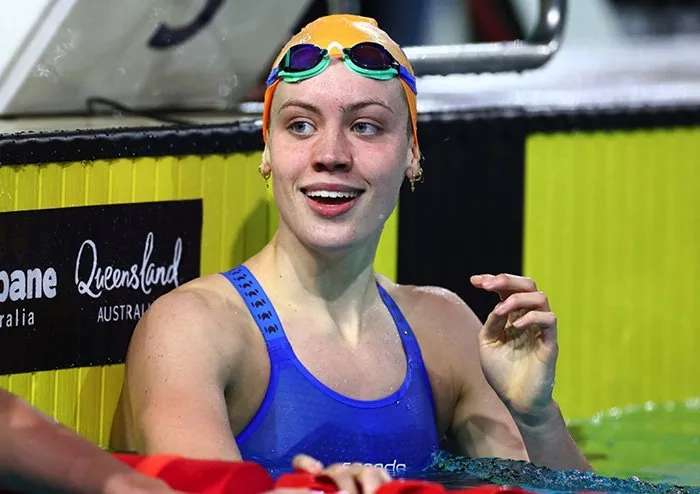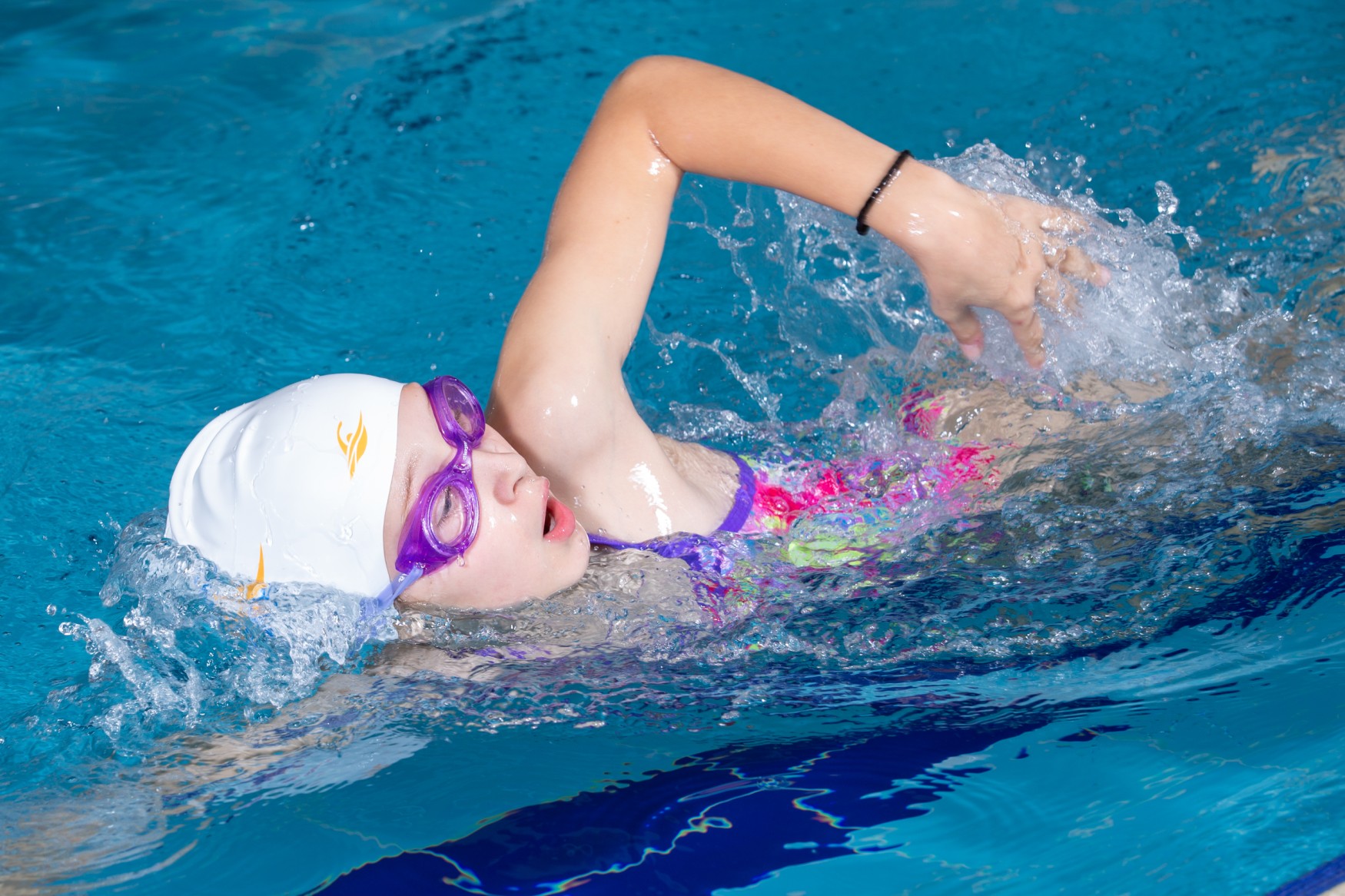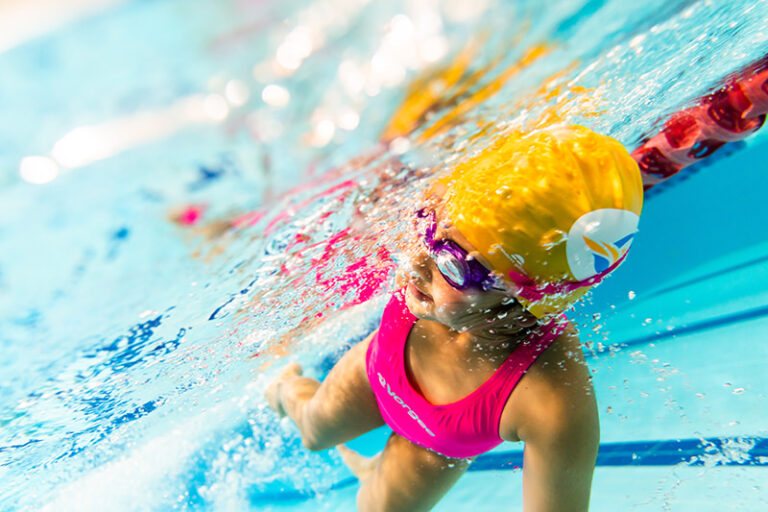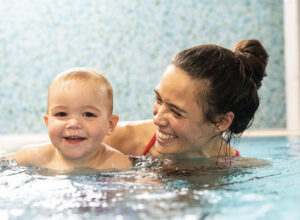
Should your child swim with or without Goggles when learning? This is one of the most commonly asked questions, and the answer is yes and no. They should do both!
Why children should learn to swim without goggles
Learning to swim without goggles is a vital safety step for all children. Accidental falls are the leading cause of drowning for young children. Most likely, they are not wearing goggles when it happens.
That’s why we recommend that children don’t wear goggles in our water confidence programs at Carlile. Find out more about our water confidence programs here.
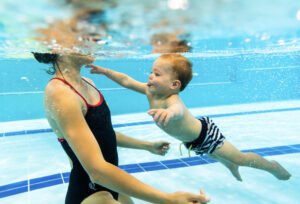
Why you shouldn’t wear goggles?
- Safety. Goggles shouldn’t be a constant part of children’s aquatic development. It’s a matter of safety. Children need to be familiar with the water without goggles so that they won’t freak out if an accident occurs because they are not accustomed to water in their eyes. If they are calm there is more chance they will remember their skills from lessons and swim or float to safety.
- Becoming comfortable with the aquatic environment. By learning to swim without goggles, children can feel the underwater environment’s blurriness and the physical sensation of opening their eyes underwater. This will help the youngster understand how to find their way underwater and help orientate themselves.
- Distraction. Goggles on small children often do not fit correctly, and fogging up can be a huge distraction. Due to the kids’ typically short attention spans, every distraction can be magnified and disrupt their lessons.
But how do you get your child comfortable swimming without goggles?
Although we recommend that children learn to swim without goggles, it should never be forced. During lessons, a child must be comfortable and ready before submerging without goggles. Young children should be introduced to the water by lightly splashing their faces, pouring it over their heads (you can try this at bath time) before eventually practicing submersions.
How to make a child comfortable swimming without goggles:
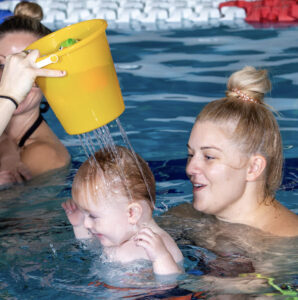
Make water fun
- World-class water treatment. Unlike old chlorine water pools, modern facilities such as Carlile have world-class water treatment and water that is not harsh on the eyes. This helps kids to be comfortable swimming without goggles, as the water will not sting and hurt their eyes.
- Encouraging your children from a young age. As we have already mentioned this can start in the bath or a backyard pool. It’s never too early to have fun in the water. If you make it fun there’s more chance they will embrace it. As Carlile’s Swimming Director, and former Australian champion Richard Cahalan said, “Encouraging your kids not to wear goggles all the time in the water is really important. Trying a few swims without goggles will ensure that your child has the confidence to swim without them, which is why during game time in our lessons, we encourage children to take them off.”
Why children should learn to swim with goggles
Goggles are valuable in improving a child’s comfort, relaxation, and orientation in the aquatic environment. Children wearing goggles are more likely to immerse themselves in the water because they can see underwater when they open their eyes.
Why wear swimming goggles?
- Fear of water. Young children sometimes fear the water, goggles can be helpful. Children may overcome their fear by having a good view of their surroundings.
- Sensitive eyes. A secure waterproof seal offered by good goggles reduces the quantity of water that can get into your eyes. Wearing a pair of goggles is needed for anyone extremely sensitive to chlorine.
- Clear view. Children may be able to increase their pace while staying safe and spatially aware if they can see more clearly underwater. The clarity goggles provide can also make kids more confident to conduct activities underwater, improving their swimming experience all around.
- Motivation. Children may improve their willingness to swim by using goggles. Not only will they give them greater self-assurance underwater, but they won’t have to deal with water in their eyes bothering them.
- Technique for more advanced swimmers. As children begin learning more complex skills it’s important they can see their hands and arms moving through the water. Goggles are also a must for squad swimming. This is because squad swimmers spend a lot more time in the water, and their improved vision aids in developing their technique.
For more information about swimming lessons visit here.
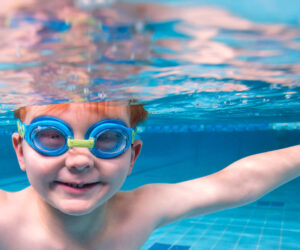
So should your child swim with or without goggles when learning? A you can see, Goggles should be viewed as a helpful swimming accessory created to protect the swimmer’s eyes and provide great underwater vision. However, relying too much on goggles and failing to control a child’s use of them can increase the danger of drowning children.

